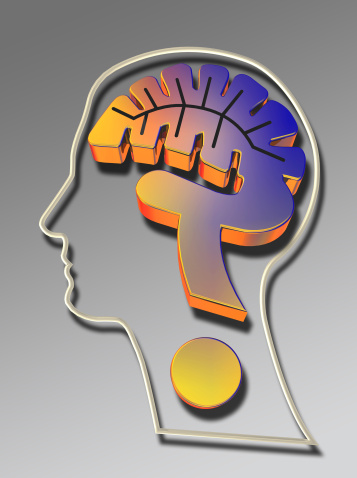Apr 27, 2025
Apr 27, 2025
 Dementia, Parkinson’s and Alzheimer’s disease (AD) are diseases of the brain (DOB). They basically degenerate the nerves, attack central nervous system, make people forgetful and ultimately make them loose their memory completely so that they cannot recognize even their near and dear ones. DOB are generally old age diseases which mostly happen after the age of 60-65 though in some cases they can start as early as 40-45. Thus the old derogatory Hindi saying “sathiya gaya hai”, meaning after 60 years he has become senile, is normally used when calling somebody a dim wit! As we age the chances of getting DOB increase.
Dementia, Parkinson’s and Alzheimer’s disease (AD) are diseases of the brain (DOB). They basically degenerate the nerves, attack central nervous system, make people forgetful and ultimately make them loose their memory completely so that they cannot recognize even their near and dear ones. DOB are generally old age diseases which mostly happen after the age of 60-65 though in some cases they can start as early as 40-45. Thus the old derogatory Hindi saying “sathiya gaya hai”, meaning after 60 years he has become senile, is normally used when calling somebody a dim wit! As we age the chances of getting DOB increase.
Present estimates are that 50 million people worldwide and nearly 6 million in India above the age of 65 years suffer from these debilitating diseases. With stress the onset of DOB comes at an even younger age and hence in India the number of people suffering from these diseases may even be larger.
Many studies done by scientists have shown that intellectually active adults suffer less from these diseases as they age. And one of the better ways to increase mental faculties is by meditation. It allows us to focus on a single subject for a long time and increases the concentration and hence mental sharpness.
Various theories of why DOB take place have been proposed. One theory states that formation of plaques in the brain damages the neurons and ultimately destroys the brain. According to this theory clumps of misfolded protein fragments called amyloid-beta or Aβ form plaques around synapses – the connecting points between neurons. This stops the communication between them and hence the loss of memory. Why Aβ - a good brain protein misfolds and forms plaques, though has still remained a mystery.
Another theory states that plaque form ation in brain takes place because of reduced number of cerebral capillaries. These brain capillaries, which are very large in numbers, supply important nutrients, oxygen and hence energy to different parts of the brain for its proper functioning. With age and less usage the capillaries become hardened, less pliable and hence less amount of nutrients flow through them. Thus their effective numbers decrease. Nevertheless the research does not show how reduced number of capillaries can increase plaque formation.
A possible answer to both the riddles of why plaques form from misfolding proteins and reduction in number of capillaries could come from electrochemistry.
It is well known that when a fluid flows in very small capillaries (brain capillaries are approximately 3 X 10-6 m (3 μm) in diameter) a small voltage is created across it. This is called the streaming potential. This small voltage also produces a micro current and it is possible that this micro current creates disturbances so that seeding and accumulation of Aβ proteins does not take place. The use of micro current for stopping rust in pipes and other materials is quite well known. And it is quite possible that a similar process may be taking place in the brain.
Incidentally the nutrients flowing in the brain capillaries together with electrical discharges at synapse junctions between communicating neurons, produce the characteristic electromagnetic (EM) signatur e of the brain. This EM signature is measured by hundreds of electrodes attached to the scalp and produces the EEG (Electroencephalography) of the brain.
As we use our brain it needs energy to function and that is provided by the flow of nutrients and oxygen in the cerebral capillaries. Larger number of capillaries means increased nutrient flow to the neurons which helps them to communicate efficiently. The more deeply we think and use our brain the more flow of nutrients takes place and this helps in increasing the effective number of capillaries and keeping them in functional and in nimble shape. At the same time the micro current production in them keeps the plaque formation at bay.
Deep thinking is facilitated by cultivating the art of meditation. Meditation helps in increasing concentration and calming of the nerves. Besides it also allows the brain to function properly and helps in reucing the plaques. Meditation can be done at any age but the brain becomes nimble and many capillaries become active if it is practiced from an early age.
Suggested Reading
1. Charles T. Ambrose, “Alzheimer’s Disease : The Great Morbidity of the 21st Century”, American Scientist, Vol. 101, No. 3, May-June 2013, pg. 194-201.
2. Lary C. Walker and Mathias Jucker, “Seeds of Dementia”, Scientific American, Vol. 308, No. 5, May 2013, pg 38-43.
3.Jan Karbowski, “Scaling of Brain Metabolism and Blood Flow in Relation toCapillary and Neural Scaling”, PLOS ONE, Vol. 6, No. 10, e26709 (www.plosone.org), October 2011, pg. 1-11.
4. Yury Petrov and S. Sridhar, “Electric Field Encephalography as a tool for functional brain research: a modeling study”, Human Brain Mapping, August 2012.
5. Arthur W. Adamson, “A Textbook of Physical Chemistry”, Academic Press, 1973, pg. 1019
Image (c) Gettyimages.com
22-Jun-2013
More by : Dr. Anil Rajvanshi